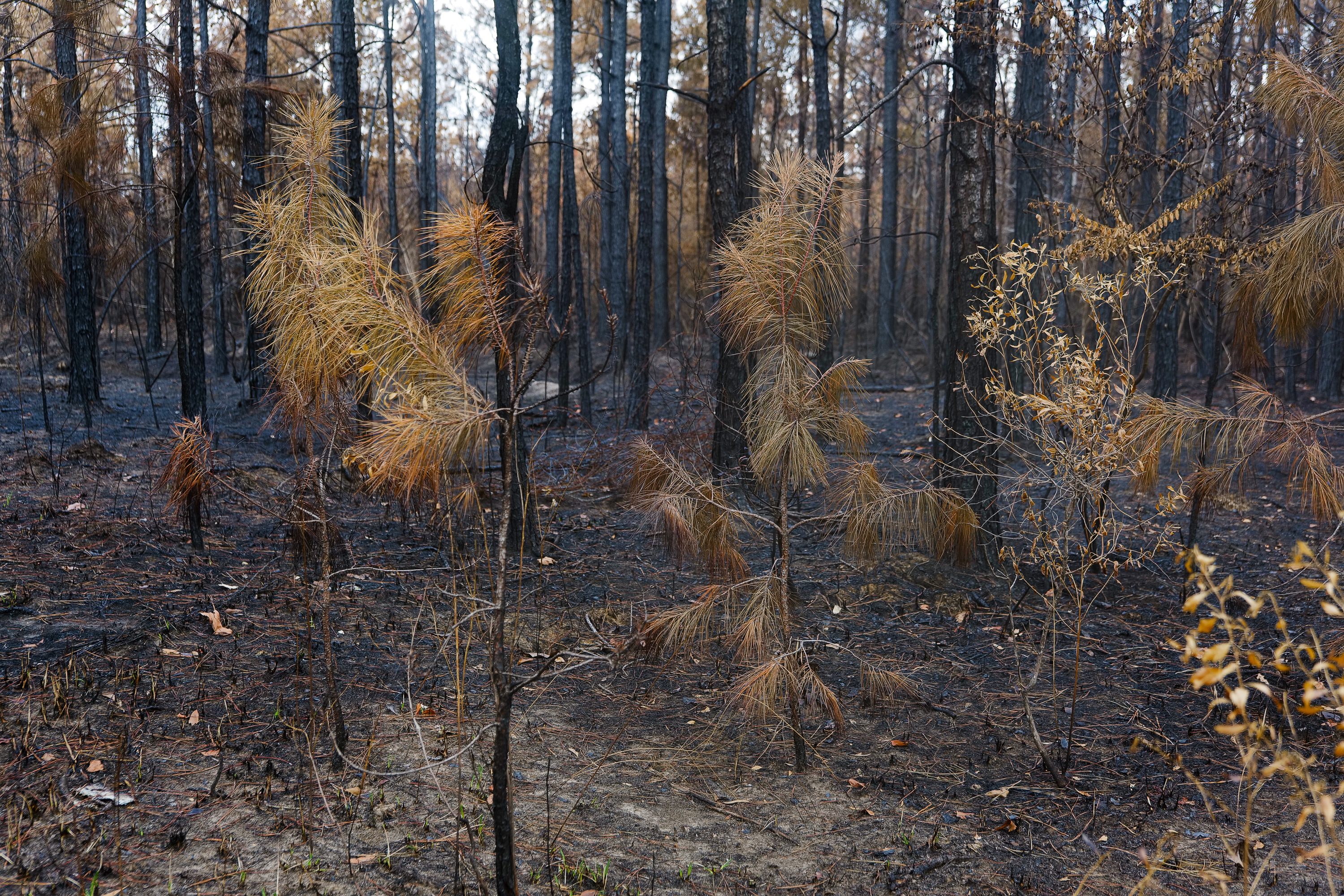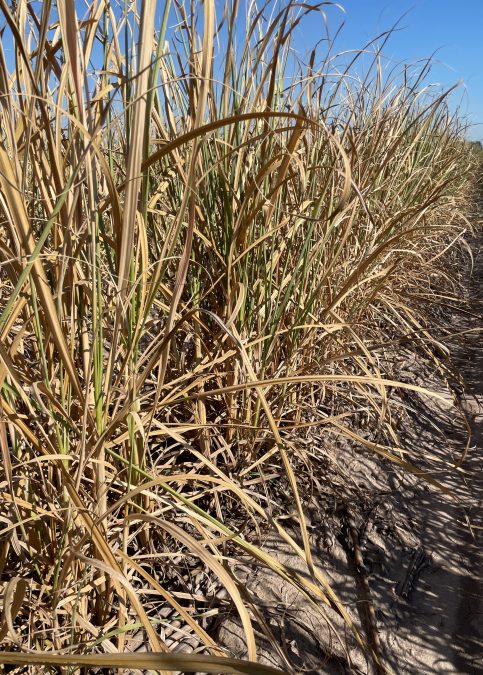
Democrats block Kennedy’s bill to protect American consumers from illegal shrimp imports using IRS funding
December 17, 2023
Houma-Terrebonne Chamber welcomes 61 new business members in 2023!
December 18, 2023These sugarcane stalks in Chad Hanks’ field in Lafayette Parish stood 3 feet tall in August, a time that they should have been 7 to 9 feet tall. Hanks was expecting at least a 40% reduction in his crop yields this year because of the extremely high temperatures and lack of rainfall. Photo by Craig Gautreaux/LSU AgCenter
Louisiana agriculture and forestry suffered $1.69 billion in damage due to this summer’s drought and excessive heat, according to preliminary estimates by LSU AgCenter experts.
Long stretches of record-high temperatures and little to no rain led to yield and quality losses and increased production costs for farmers of row crops as well as fruits, nuts and vegetables. Livestock producers dealt with animal health issues and struggled to grow adequate forage. Forest landowners faced wildfires while crawfish producers monitored the threat of saltwater intrusion.
In a recently released report, AgCenter economists Kurt Guidry, Jinggang Guo and Raghav Goyal and forester Robbie Hutchins detail the far-reaching effects of the challenging weather conditions on the state’s agriculture and forestry — an industry with an annual value of about $11.4 billion.
“Unlike past natural disasters, which impacted only portions of the state for short periods of time, drought conditions coupled with record-high temperatures persisted statewide throughout most of the 2023 production season,” the authors wrote.
They based their damage estimates on reports from AgCenter agents and specialists throughout Louisiana.
About half of the total damage, $836.5 million, occurred on farms where crops performed poorly or died. With the lack of usual summer rainfall, farmers also racked up expenses from having to irrigate more often. Soybeans and sugarcane took the hardest economic hit, with those industries losing a combined $595 million.

Pine trees sport dead, brown needles and charred bark in a forest along Lonzie Doyle Road near the Westport community in Rapides Parish on Sept. 5, 2023. This forest burned in the Highway 113 Fire, which has consumed about 8,000 acres.
Livestock and hay producers sustained $389.2 million in losses stemming from animal deaths, forced liquidation, reduced sale weights, abortions and reduced milk production. Feed costs soared as the heat and drought hampered forage production and limited grazing capacity.
Wildfires burned more than 50,000 acres of forests, destroying $71.4 million of timber. Another $249.5 million in damage was caused by drought conditions that slowed tree growth and forced the replanting of failed seedlings.
The impact to the crawfish industry is estimated to be $139.8 million. The production and harvest season has just begun, however.
“Known issues with water availability and high salinity levels are expected to limit crawfish acres,” the report says. “In addition, research, along with historic experiences and knowledge, shows a high correlation between drought and extreme temperatures to reduced crawfish population.”
The full effects of this year’s extreme weather won’t immediately be known.
“There is potential for multi-year impacts to materialize that would increase the challenges faced by certain agricultural industries,” the report says.
The full report is available on the AgCenter website at https://tinyurl.com/msz9dhcb.







